Core Dashboard Features
Let’s explore some of the basic features that allow your team to quickly navigate your data within SourceMedium:
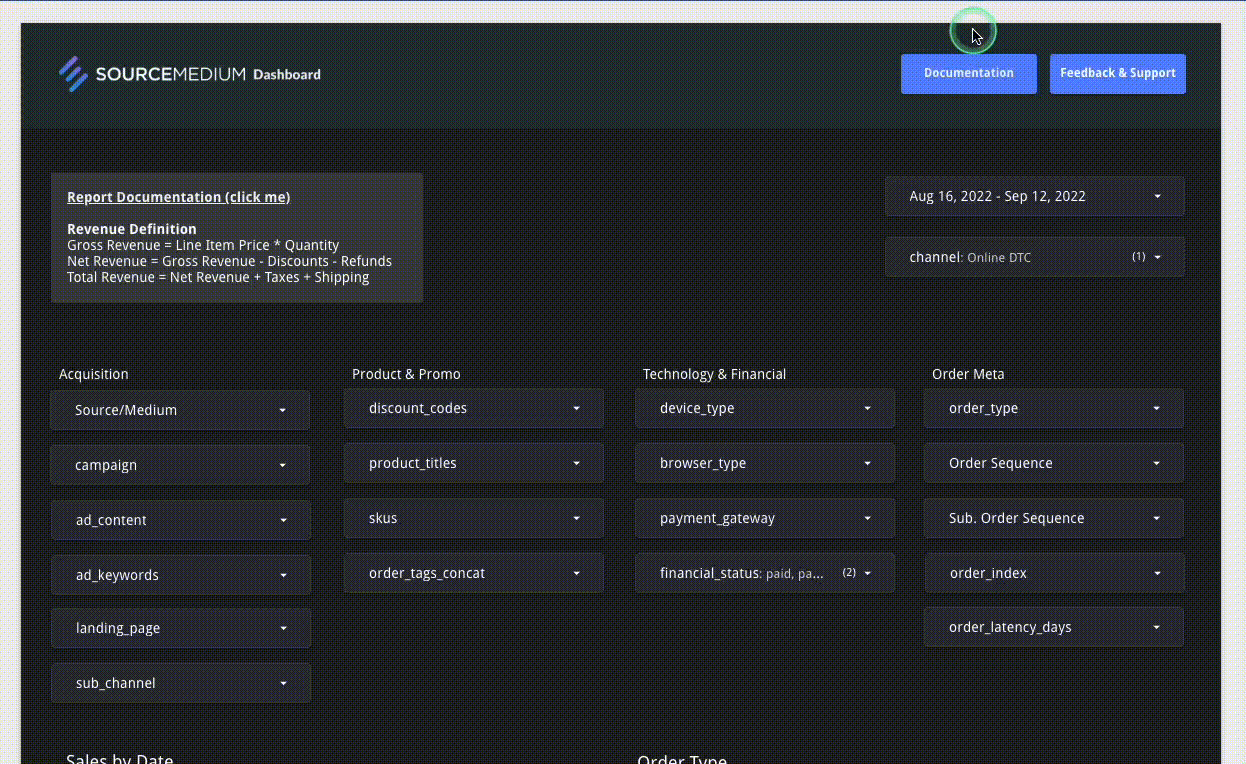
This example 👆 demonstrates setting the date range filter to YTD, selecting multiple channels, setting a chart’s date granularity to ‘month’, changing optional metrics, exporting chart data, and resetting filters. Here’s some more info on each:
Report Documentation Key
Located in the top left of each module
Key definitions and documentation pertaining to each module.
Date Range Filter
Located in the top right of each module and allows you to toggle between any dates since the start of your commerce and marketing platforms ingested data history

On most pages, this filter applies to every chart on that specific dashboard page and the default range is 28 days.
Updating a date filter on a specific dashboard page will not automatically change the date ranges of the other dashboard pages.
By default, the current day is not included and we suggest not to use the current day in your analysis as your dashboards are refreshed each day with the prior day ‘s data.
Row Up/Down Icons
The up and down arrows that can be found on many tables and charts help to change the grouping time frame of reference (day ↔ week ↔ month ↔ year) or hierarchy of data (Source/Medium ↔ Campaign ↔ Landing Page)
Chart at the day level

Same chart after 'drilling up' using the small arrows (weekly granularity)
Channel Filter
Located in the top right of each module and allows you to toggle between your various commerce and marketing channels

This defaults to Online DTC (where we have out-of-the-box data cleaning logic to separate Draft and Exchanged orders).
Otherwise, this is where your other channels (Amazon, Wholesale, Retail) live.
These can be selected independently or in combination to view different slices of your business.
Brand ID Selector
Located in the top right of each module

If you have multiple online store instances integrated with SourceMedium the Brand ID selector will allow you to select different combinations at once.
Optional metrics
Available on selected charts
Some charts allow you to change the metrics displayed.
These choices can be customized with any metrics available in the module by reaching out to the SourceMedium team.
Resetting filters
Located in the toggle menu bar at the top of each module

This button clears all filters currently selected in the module to their defaults — this is especially helpful when performing complex analyses in the deep dive modules that contain many filters.
Saving filter settings
To return to a frequently used analysis you can save all filter settings on any module by bookmarking the page in your browser.
Filter selections are maintained within the URL of Looker Studio reports.
Exporting data
The data is yours! Any user can export any of the data shown in SourceMedium.
Sharing insights
If you would like to share the SourceMedium Dashboard with a coworker, they must first be added to your SourceMedium access group.
Once a new member has been added to your SourceMedium access group, you will now be able to share specific views of any dashboard module with all filters intact!
Was this page helpful?


